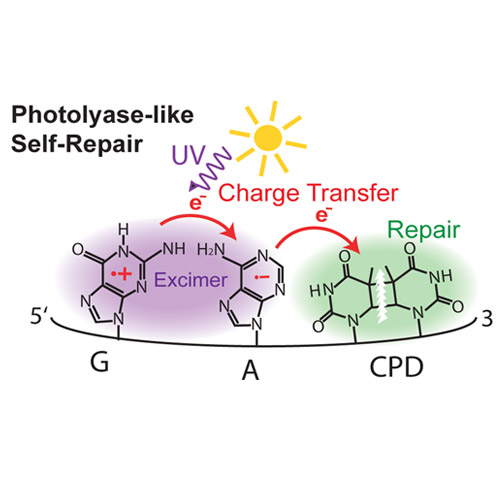UV-Induced Charge Transfer States in DNA Promote Sequence Selective Self-Repair
10-Dec-2015
J. Am. Chem. Soc., DOI: 10.1021/jacs.5b09753
Absorption of UV-radiation in nucleotides initiates a number of photophysical and photochemical processes, which may finally cause DNA damage. One major decay channel of photoexcited DNA leads to reactive charge transfer states. This study shows that these states trigger self-repair of DNA photolesions. The experiments were performed by UV spectroscopy and HPLC on different single and double stranded oligonucleotides containing a cyclobutane pyrimidine dimer (CPD) lesion. In a first experiment we show that photoexcitation of adenine adjacent to a CPD has no influence on this lesion. However, excitation of a guanine (G) adenine (A) sequence leads to reformation of the intact thymine (T) bases. The involvement of two bases for the repair points to a long-living charge transfer state between G and A to be responsible for the repair. The negatively charged A radical anion donates an electron to the CPD, inducing ring splitting and repair. In contrast, a TA sequence, having an inverted charge distribution (T radical anion, A radical cation), is not able to repair the CPD lesion. The investigations show that the presence of an adjacent radical ion is not sufficient for repair. More likely it is the driving power represented by the oxidation potential of the radical ion, which controls the repair. Thus, repair capacities are strongly sequence-dependent, creating DNA regions with different tendencies of self-repair. This self-healing activity represents the simplest sequence-dependent DNA repair system.











